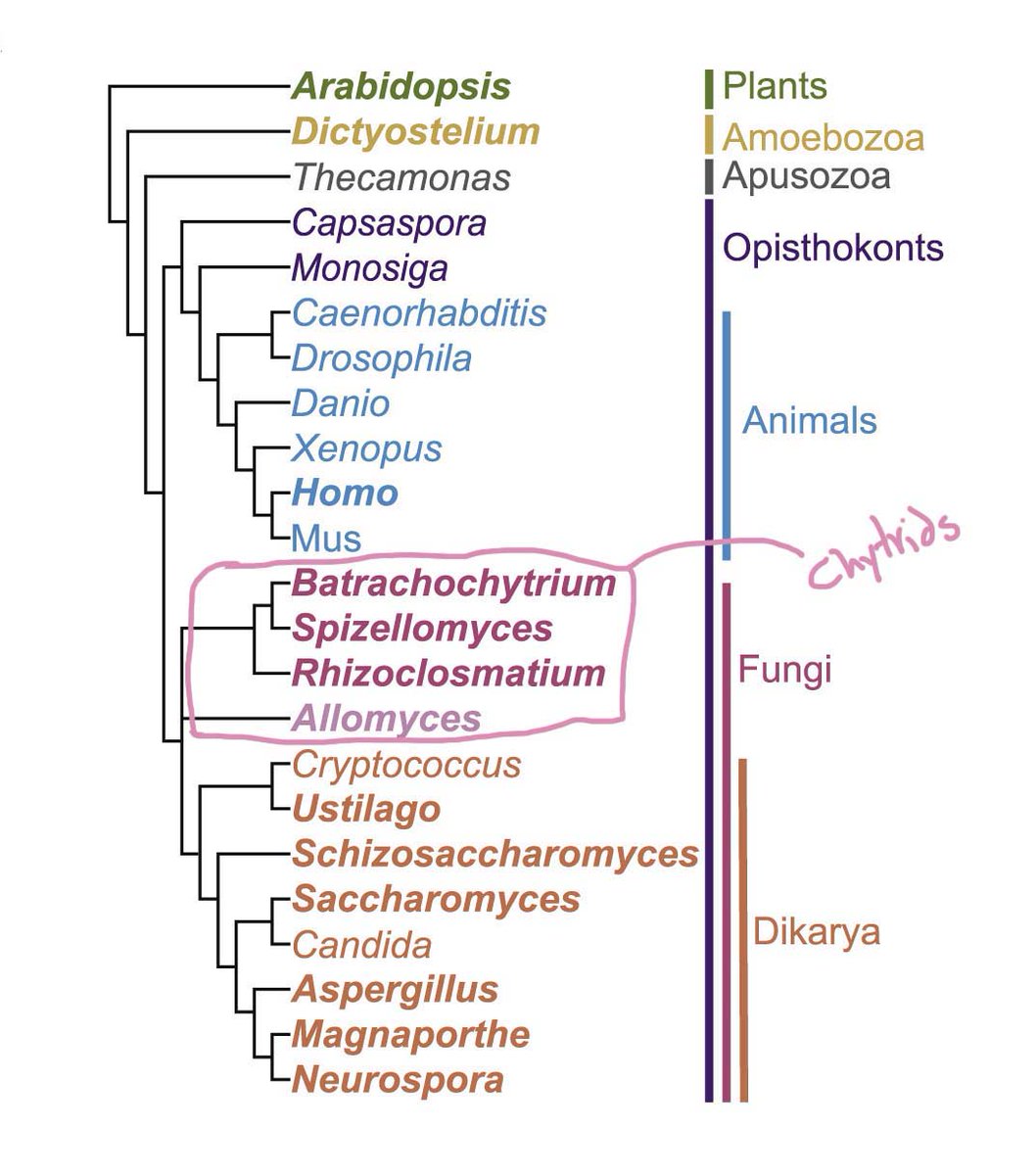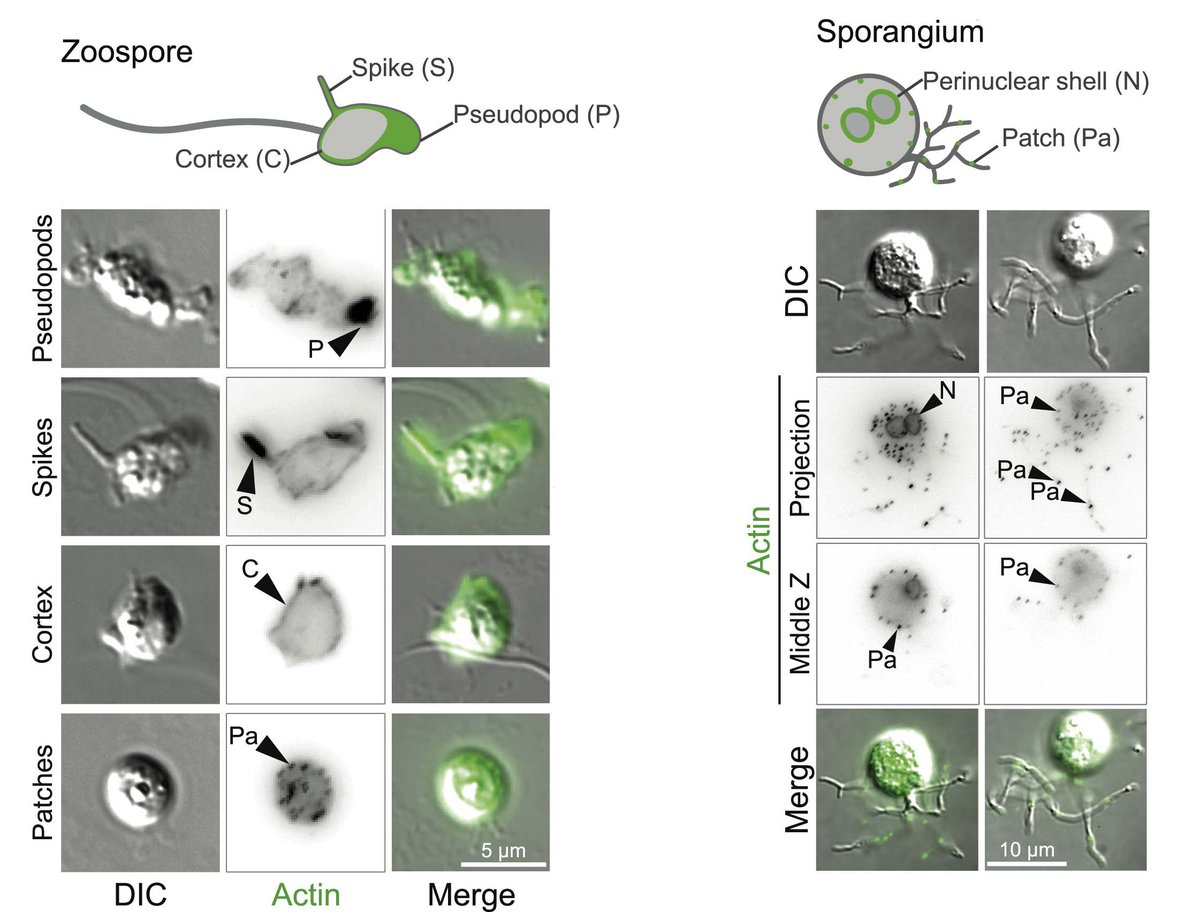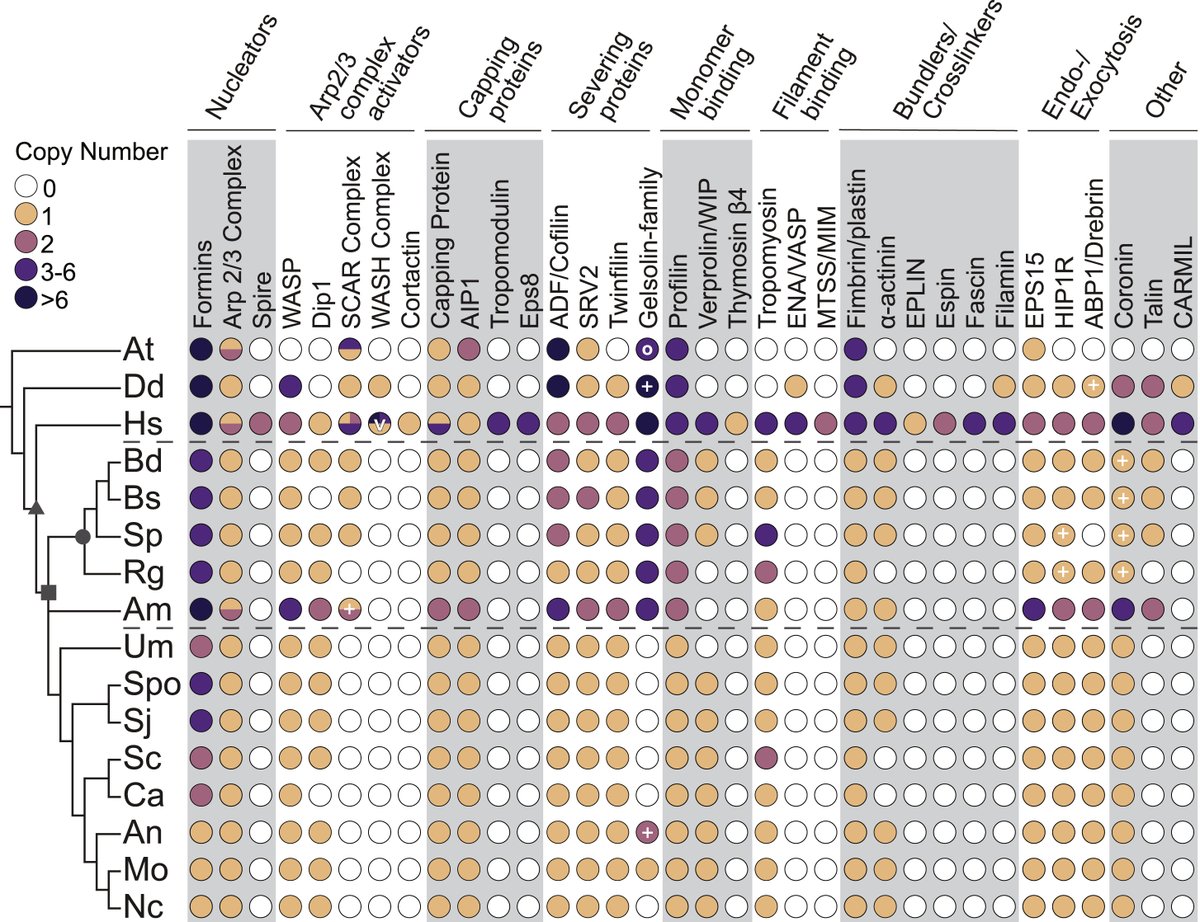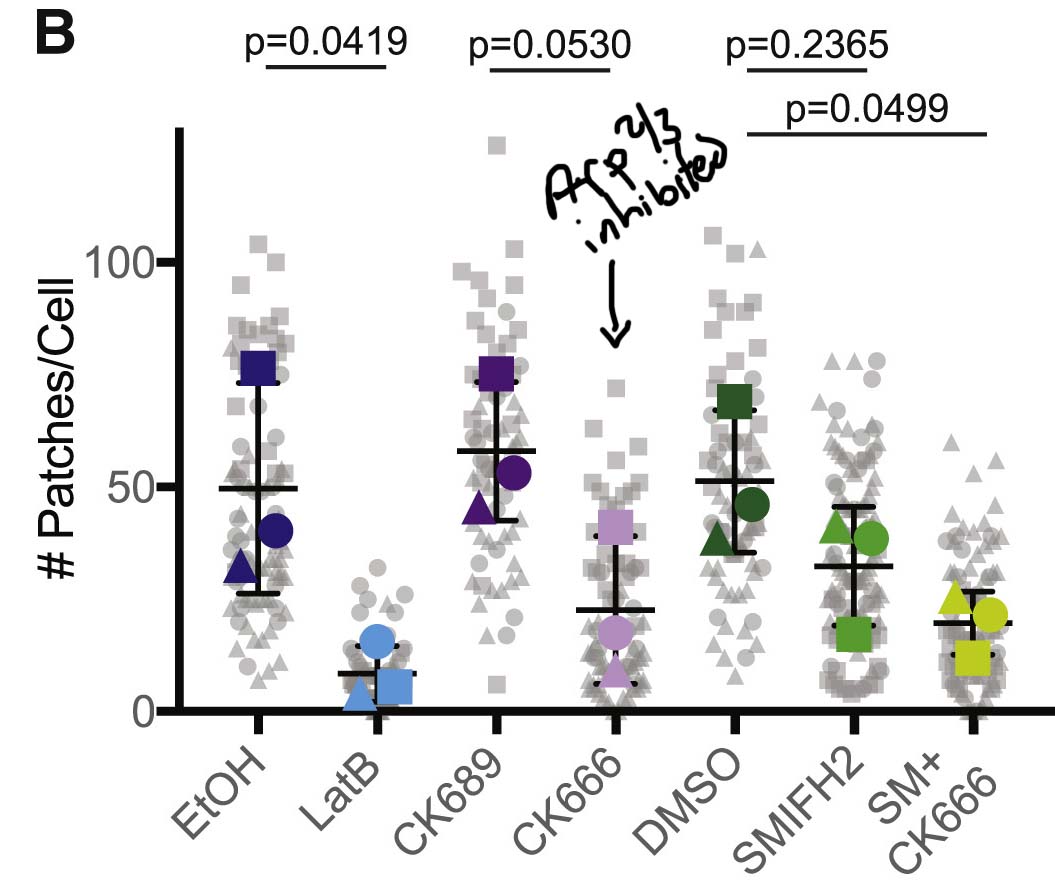It’s finally that time: time for me to plug my first ever publication (w/ @FritzLaylin, @K_aRobinson, and Meg Titus). Buckle up for a wonderful journey into the world of chytrid fungi and the actin cytoskeleton.
You may be asking yourself “what in the world is a chytrid fungus?” well, chytrid fungi are deep branching fungi, which puts them in a great position to study the evolution of actin networks as well as give insight to the regulation of actin in animals (including us of course).
So what else makes these little cells so important? Besides being key players in soil and aquatic ecosystems, one chytrid has gained attention recently as the "frog-killing fungus."
Batrachochytrium dendrobatidis (Bd) infects the skin of amphibians and has been implicated in dozens of population declines and extinctions over the past few decades. Thus, understanding the biology of this fungus is of ecological importance as well.
But chytrids don’t look like the fungus you’re probably used to seeing. They have a bi-phasic lifecycle, spending time as a motile spore (sans cell wall) before settling down and becoming a sessile sporangium (w/ cell wall). In this stage they develop and release more zoospores.
These two life stages in Bd (and most chytrids) have drastically different actin networks, with more animal-like networks (pseudopods, cortex) in the motile spore and more fungal-like networks (patches) in the sessile sporangium.
This intermediate nature is also reflected in the actin regulatory protein repertoire of chytrids. They have several proteins that are present in animals but have been lost in Dikarya (the most studied fungal group).
The keen eye of one who studies actin in Dikarya may have asked: “wait where are the actin cables?” Well, our study revealed that the ability to build actin cables in the cell body of a sporangium is associated with the presence of a specific type of formin.
Continuing with the hybrid theme, proteins used to build the actin structures we see in Bd are similar to the ones used to their build analogous structures in animals and fungi. For example, the Arp2/3 complex is also necessary for building actin patches in Bd sporangia.
: Overall, our findings help further our understanding of the evolution of actin networks, as chytrids are a mash-up of animal- and fungal-typical actin networks. View full text here: https://www.sciencedirect.com/science/article/pii/S0960982221000014

 Read on Twitter
Read on Twitter







